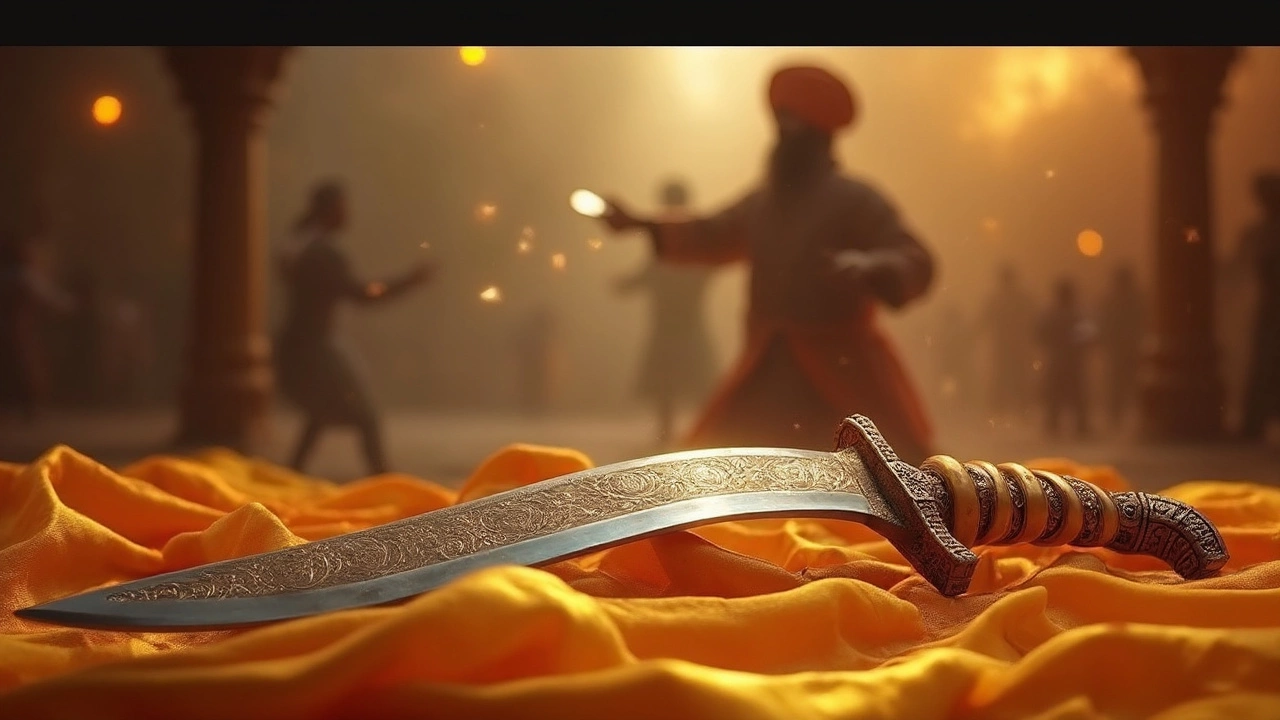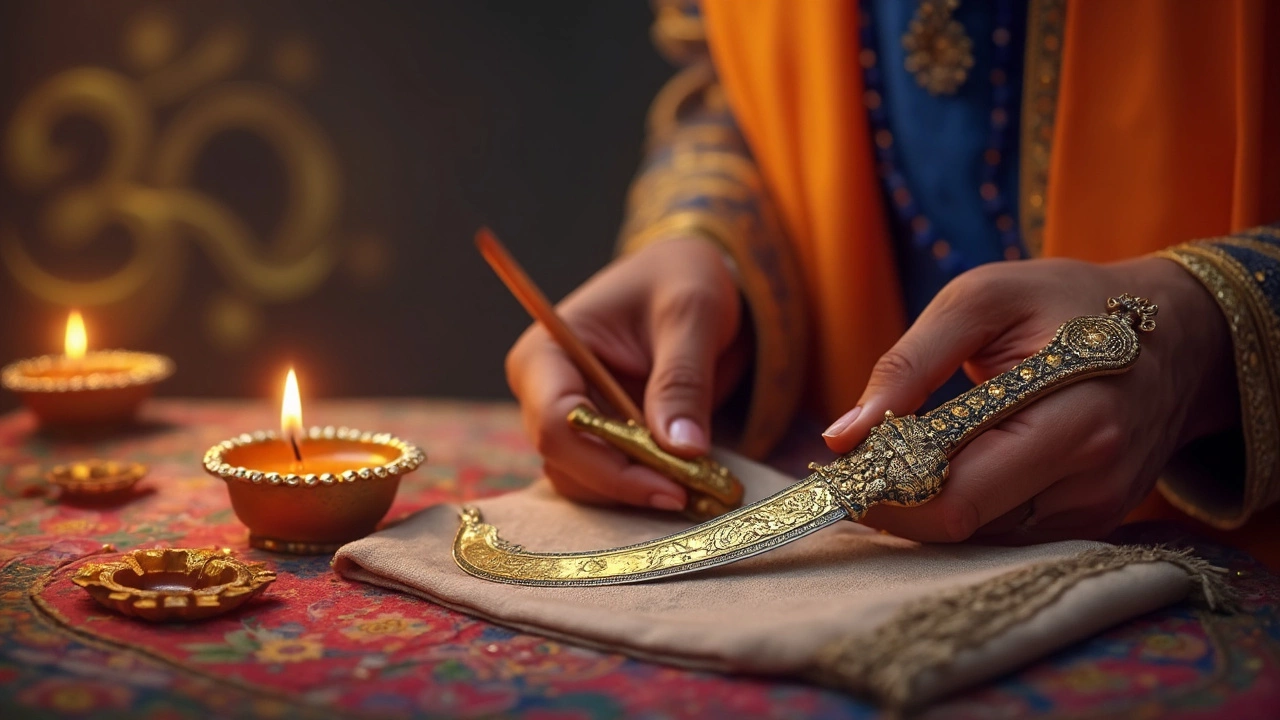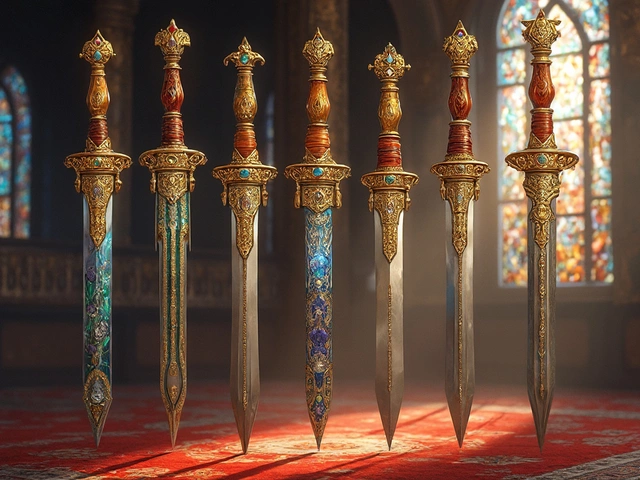Sikhism – Faith, History, and Everyday Style
If you’ve ever wondered what Sikhism really looks like beyond the turban and the Gurdwara, you’re in the right spot. This page gives you the basics of the religion, a quick look at its history, and the way Sikhs use jewelry and dress to express identity.
Key Beliefs and History
Sikhism began in the Punjab region of India over 500 years ago when Guru Nanak, the first Guru, started preaching a simple message: one God, equality for all, and a life of honest work. Ten Gurus followed, each adding to the faith and compiling the scriptures that become the Guru Granth Sahib, the holy book that guides Sikhs today.
The core ideas are easy to remember. Sikhs believe in one universal creator, they reject caste and gender discrimination, and they stress service (seva) to humanity. The concept of ‘langar’—a free community kitchen—shows this in action, offering anyone a meal regardless of background.
History also shaped the way Sikhs look. When the Mughal Empire tried to force conversions, Gurus encouraged a distinct, proud appearance: unshorn hair, a turban, a wooden comb (kanga), a steel bracelet (kara), and a small sword (kirpan). These five articles, called the Five Ks, are more than accessories; they are daily reminders of faith and identity.
Sikh Jewelry and Dress
Jewelry in Sikh culture isn’t about flash. It’s about meaning. The kara, for instance, is a simple steel band worn on the wrist. Its smooth circle symbolizes an unbroken connection to God and the promise to act justly.
Men often wear a small silver or gold chain underneath the turban. While not a required article, it’s a subtle way to keep a personal heirloom close. Women may choose gold or silver bangles, but they usually avoid excessive ornamentation to stay true to the principle of humility.
When it comes to weddings, Sikh brides wear a lavish ‘kanika’ set—gold ornaments that include a neckpiece, earrings, and a ‘chura’ of red bangles. These pieces are passed down through generations, mixing family heritage with contemporary design. Buying or gifting these items means respecting tradition while adding a modern twist, like incorporating tiny diamonds or colored stones.
If you’re shopping for Sikh-inspired jewelry, look for symbols that matter: the Khanda (double-edged sword), the Ek Onkar (one universal creator), or simple geometric shapes that echo the Five Ks. Many Indian jewelers, including RH Jewellers, offer collections that respect these motifs without overwhelming the wearer.
Every piece tells a story. A plain steel kara can remind a young professional of their promise to stay honest at work. A set of heirloom bangles can link a bride to her ancestors. Understanding the why behind each item helps you choose pieces that fit both style and belief.
So whether you’re curious about Sikhism’s roots or hunting for meaningful jewelry, remember that the faith’s strongest tools are its simple symbols. They’re easy to wear, easy to understand, and carry a past that’s still alive today.
Why Sikhs Keep Their Hair Uncut: Culture, Religion, and Identity Explained
Discover why uncut hair matters in Sikhism. Explore the deep traditions, beliefs, and real-life practices behind this powerful symbol of Sikh identity.
Exploring the Five Symbols of Sikhism
The five symbols of Sikhism, known as the Five Ks, are integral to the Sikh faith and represent the core values and identity of Sikhs. These symbols are more than just physical items; they hold deep spiritual significance and serve as daily reminders of faith and commitment. Each symbol has a distinct purpose, reflecting the beliefs and duties of a practicing Sikh. From the steel bracelet to the ceremonial comb, these symbols weave into the everyday lives of Sikhs, illustrating unity and devotion. Understanding these symbols offers valuable insights into Sikhism's rich cultural and religious tapestry.
The Kirpan: A Symbol of Courage and Justice
The Kirpan is more than just a ceremonial dagger; it's a profound emblem of bravery and righteousness for Sikhs around the globe. Understanding its significance involves diving into its historical origins, its role in Sikhism, and the impact it continues to have today. As a powerful reminder of a Sikh's duty to stand against injustice and protect the vulnerable, the Kirpan carries both cultural and spiritual weight. Explore how this symbol is interwoven with values of courage and justice within the Sikh community.
Caring for Your Kirpan
The article provides practical guidance on the maintenance and care of a Kirpan, highlighting its significance in Sikhism. Learn tips for keeping the Kirpan clean and ensuring its longevity. Discover cultural facts about the Kirpan’s role beyond being a ritual item. Explore methods for appropriate storage and why this ceremonial dagger is cherished by Sikhs worldwide.
Famous Legal Cases Involving the Kirpan
The Kirpan, a ceremonial dagger carried by Sikhs, has been at the center of numerous legal cases worldwide. These cases primarily explore the tension between religious freedom and public safety. This article delves into the most significant legal battles, highlighting how different countries have handled the issue. It offers insights into the delicate balance between upholding religious rights and maintaining security. Readers will gain a better understanding of this complex topic by examining precedent-setting cases.
Why Sikhs Carry a Kirpan: Exploring Its Religious and Cultural Significance
The Kirpan is much more than a ceremonial dagger for Sikhs; it represents a deep religious commitment and cultural identity. Worn by initiated Sikhs, it's a symbol of justice and moral responsibility. This article delves into the historical origins, legal acceptance, and modern-day relevance of the Kirpan, offering insights into why it remains vital in Sikh life today. Discover both the spiritual and practical meanings behind the Kirpan.
Kirpan Wearing and Carrying: A Practical Guide
Navigating the proper wearing and carrying of a Kirpan involves understanding its significance and adhering to practices that honor both tradition and safety. This guide provides practical tips and guidelines for Sikhs and those who are curious about Sikh culture. Discover interesting facts, the right ways to carry a Kirpan, and tips to integrate it seamlessly into everyday life while respecting its cultural and religious importance. Explore this essential aspect of Sikh identity in a respectful and informed way.
Understanding Kirpan: Public Perceptions Across Countries
Exploring how different countries regard the Kirpan in public spaces reveals deep cultural and religious complexities. The Kirpan, a ceremonial dagger carried by Sikhs, symbolizes both faith and identity. As countries navigate safety and cultural respect, varying legal frameworks exist. This article examines these frameworks and offers insights into fostering greater cultural understanding.
Kirpan: A Sacred Duty Beyond the Sword
The Kirpan is an essential symbol in Sikhism, representing more than just a mere sword. It's a manifestation of faith, courage, and the duty to stand against injustice. This article explores its roots, contemporary relevance, and the sense of identity it provides to its bearers. Discover the profound meaning and responsibilities tied to this sacred article of faith.
The Evolution of the Kirpan: A Journey Through Time
The kirpan is not just a dagger in Sikhism; it holds a deep spiritual and cultural significance. Over the years, its design and use have adapted, yet its symbolic meaning remains unchanged. This article delves into the history, modern interpretations, and the diverse roles the kirpan plays today. We will explore how different communities interpret the kirpan's relevance and how this ancient tradition meets contemporary challenges.
Kirpan: A Symbol of Courage and Justice
The Kirpan is more than just a ceremonial dagger worn by Khalsa Sikhs; it embodies courage, justice, and the defense of the downtrodden. This article delves into the rich history of the Kirpan, its significance in Sikh culture, and the principles of bravery and justice it represents. We explore its role in day-to-day life and how it continues to be a relevant symbol even today. Readers can learn about the spiritual and moral values attached to carrying the Kirpan, as well as its importance in promoting social justice.
Caring for Your Kirpan: A Practical Guide
The kirpan is more than just a ceremonial weapon; it's a significant symbol of Sikh faith and values. Proper maintenance of your kirpan not only honors its place in your life but also ensures its longevity. Learn the basics of cleaning, storage, and handling to prevent damage. Discover the cultural significance and modern adaptations of kirpan usage. Whether you're a lifelong Sikh or new to the practice, this guide provides practical insights for everyone.
















